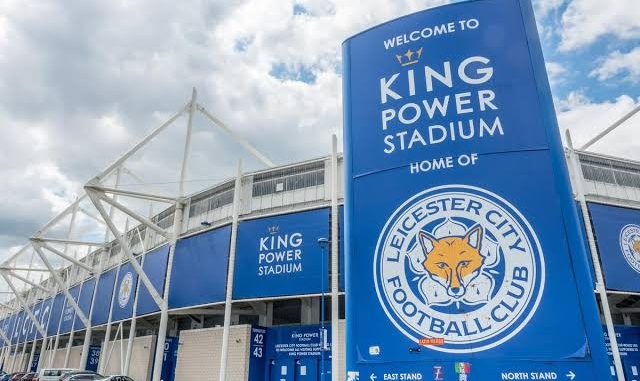
Premier League Shocker: Leicester City Set to Leave King Power Stadium – Here’s Why

In a stunning turn of events, Leicester City Football Club, the 2015-16 Premier League champions and long-time occupants of the King Power Stadium, have announced that they will no longer be playing their home matches at this iconic venue. This decision marks the end of an era for the club and its supporters, as the King Power Stadium has been synonymous with some of the most memorable moments in the Foxes’ history. The move has left fans and pundits alike questioning why the club has chosen to sever ties with a ground so central to their identity. As the story unfolds, several compelling reasons for the decision have emerged, ranging from economic challenges to logistical considerations and ambitions for future growth.
### Economic Challenges and Financial Constraints
The financial strain on Leicester City, particularly in the wake of the COVID-19 pandemic, has been a significant factor in the club’s decision to vacate the King Power Stadium. While the club has managed to stabilize itself after the initial shockwaves of the pandemic, the economic landscape for football clubs has changed drastically. With revenue streams from ticket sales, matchday hospitality, and stadium-related events taking a massive hit, maintaining a stadium of King Power’s size and infrastructure has become a costly endeavor.
The stadium, which opened in 2002, has a capacity of 32,261, making it one of the larger venues in the Premier League. However, compared to the likes of Manchester United’s Old Trafford or Arsenal’s Emirates Stadium, King Power does not generate the same level of matchday income. The club’s owners have been weighing the cost-effectiveness of continuing to operate the stadium versus exploring alternative options that may present better long-term financial sustainability.
Moreover, Leicester City has faced increasing pressure to align its operating costs with the revenue it generates. The disparity between their relatively modest earnings from gate receipts and the rising wage bill associated with competing in one of the most lucrative football leagues in the world has created a delicate balancing act. By moving away from King Power, the club may be seeking a venue or model that allows them to cut down on overheads while still offering top-tier football to their fans.
### Ambitions for Expansion and Growth
Leicester City’s success in recent years, particularly following their surprise Premier League triumph in 2016, has significantly raised the club’s profile. The Foxes have consistently challenged the traditional top six and have also competed in European competitions like the UEFA Champions League and the Europa League. However, their aspirations have been somewhat hampered by the limitations of the King Power Stadium.
There have been long-standing plans to expand the King Power’s capacity to accommodate the club’s growing fan base. Initial proposals for the stadium’s expansion, which included adding an additional tier and increasing capacity to around 40,000, have been discussed for years. However, logistical challenges and planning delays have hindered progress. With Leicester’s ambitions extending beyond domestic success, the need for a larger, more modern facility to match their growing stature became apparent.
Relocating to a new, state-of-the-art stadium could offer Leicester City the opportunity to not only expand capacity but also modernize their facilities. A newer venue could incorporate the latest in fan engagement technology, better corporate hospitality options, and more sustainable infrastructure. It would allow the club to compete with its Premier League rivals, many of whom have invested heavily in upgrading or building new stadiums.
### Logistical and Infrastructure Limitations
One of the major logistical reasons behind Leicester City’s decision to leave King Power Stadium lies in the location and infrastructure surrounding the venue. Although the stadium is conveniently located near the city center, it has faced increasing challenges with transportation and access. On matchdays, traffic congestion, parking shortages, and limited public transport options have often frustrated fans, leading to calls for improvements to the stadium’s accessibility.
The club has explored potential upgrades to the surrounding infrastructure, but these have been met with resistance from local authorities and residents. Expanding the stadium’s capacity would also exacerbate these issues, creating further strain on transport links and potentially impacting the matchday experience for fans. By moving to a new location, the club can take a more holistic approach to stadium planning, ensuring that the venue is not only larger but also better connected to transport hubs and equipped to handle the flow of thousands of fans.
### Changing Ownership and Strategic Direction
Another factor driving Leicester City’s decision is the evolving strategic direction of the club’s ownership group. King Power International, the Thai-based consortium that owns the club, has been exploring various business ventures and growth opportunities beyond football. While the late Vichai Srivaddhanaprabha, the club’s former owner, was deeply committed to Leicester’s local community and the King Power Stadium project, the current leadership is reportedly taking a more global perspective.
Relocating the club to a new, more commercially viable stadium may align with King Power’s broader vision of transforming Leicester City into a global brand. In recent years, the ownership has focused on expanding Leicester’s international reach, with preseason tours, commercial partnerships, and a growing fan base in Asia and beyond. A new stadium could serve as a symbol of Leicester’s ambitions to become a truly global football powerhouse.
### Conclusion
While Leicester City’s decision to leave the King Power Stadium marks a significant chapter in the club’s history, it is a move driven by both necessity and ambition. Financial pressures, logistical challenges, and the desire for growth have all contributed to the decision. As the club looks to the future, fans can expect Leicester City to continue to evolve, with a new stadium playing a central role in their journey toward sustained success in the Premier League and beyond.
Though the King Power Stadium will always hold a special place in the hearts of Leicester City supporters, this decision reflects the ever-changing landscape of modern football, where clubs must constantly adapt to stay competitive. For Leicester City, leaving King Power could be the next step in realizing their long-term ambitions.

Leave a Reply